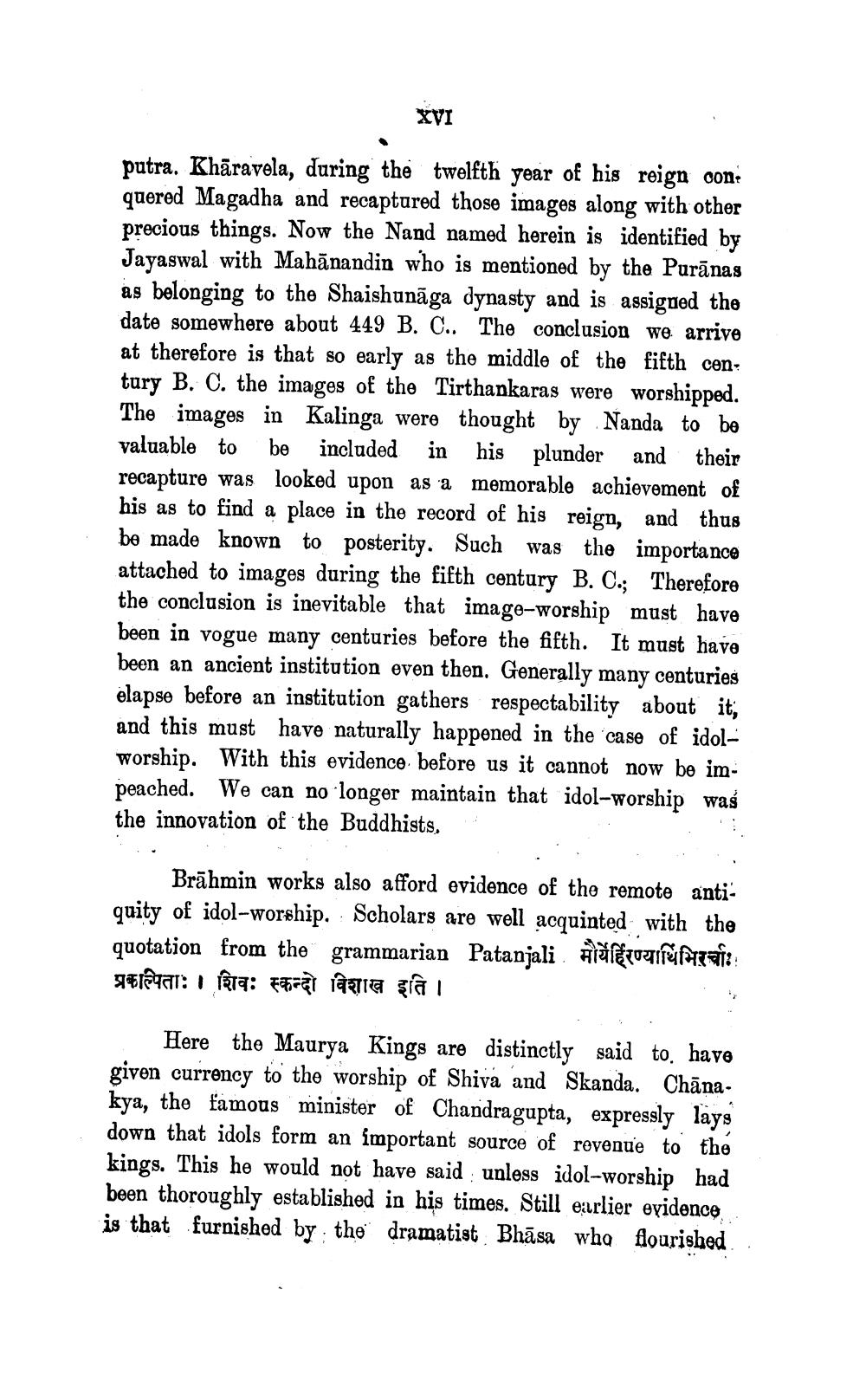________________
XVI
putra. Khāravela, during the twelfth year of his reign con quered Magadha and recaptured those images along with other precious things. Now the Nand named herein is identified by Jayaswal with Mahanandin who is mentioned by the Purānas as belonging to the Shaishunaga dynasty and is assigned the date somewhere about 449 B. C.. The conclusion we arrive at therefore is that so early as the middle of the fifth century B. C. the images of the Tirthankaras were worshipped. The images in Kalinga were thought by Nanda to be valuable to be included in his plunder and their recapture was looked upon as a memorable achievement of his as to find a place in the record of his reign, and thus be made known to posterity. Such was the importance attached to images during the fifth century B. C.; Therefore the conclusion is inevitable that image-worship must have been in vogue many centuries before the fifth. It must have been an ancient institution even then. Generally many centuries elapse before an institution gathers respectability about it, and this must have naturally happened in the case of idolworship. With this evidence before us it cannot now be impeached. We can no longer maintain that idol-worship was the innovation of the Buddhists.
Brahmin works also afford evidence of the remote antiquity of idol-worship. Scholars are well acquinted with the quotation from the grammarian Patanjali मौर्येर्हिरण्यार्थिभिरर्चा:: प्रकल्पिताः । शिवः स्कन्दो विशाख इति ।
Here the Maurya Kings are distinctly said to. have given currency to the worship of Shiva and Skanda. Chanakya, the famous minister of Chandragupta, expressly lays down that idols form an important source of revenue to the kings. This he would not have said unless idol-worship had been thoroughly established in his times. Still earlier evidence is that furnished by the dramatist Bhasa who flourished.
:




